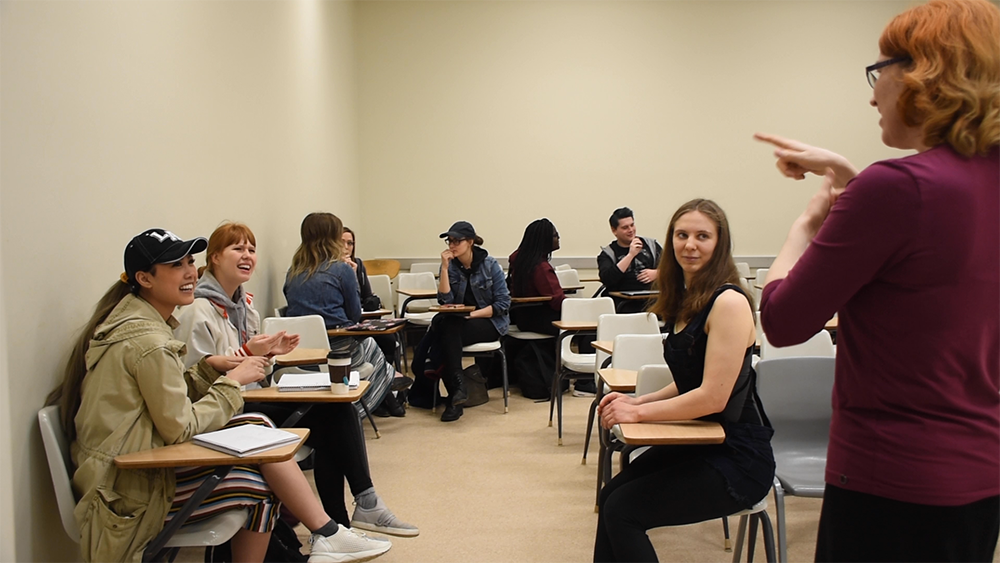Teaching as a Complementary Science and Art
Jolanta Lapiak has taught American Sign Language (ASL) levels 100 and 200 at the University of Alberta for the past 8 years. She is a recipient of the Jan Chalk Contract Instructor Teaching Award in Modern Languages and Cultural Studies.
In producing this video, we communicated with Jolanta over email in English and in-person during production through an interpreter. We were welcomed into her classroom during the Winter 2019 Term.
Jolanta and her students taught the CTL team members that her language is more than ASL; it's facial expressions, body language, warmth, humor, and a way of life.

How do you approach your teaching?
Teaching a second language is a complementary science and art, an interplay of pedagogical strategies and creative dynamics between individuals and groups in the classroom.
Collaborative and cooperative learning allows students to interact with one another on a peer level, which encourages a two-way active learning: listening (receptive) and speaking (being expressive) in ASL. Storytelling also engages their learning attention. People love great stories -- what could be a better way to learn language through storytelling?
As a creative person, I also encourage students to (re)develop imagination and creative skills including problem-solving when making sentences and stories during practicing ASL -- to play and experiment (thus it's okay to make mistakes) with how words and sentence structure work.
Students may forget some language over time if they don't use the language, yet their lifelong take-aways are the increased cultural relativism; improved interactive skills, learning strategies, and communicative negotiation skills; greater appreciation for diversity and respect for human beings of other languages and cultures; and higher value placed on diversity for its perspectives and contributions; as well as an improved a range of skills they can apply to other everyday situations in their lives.
About Jolanta Lapiak
Jolanta Lapiak is an ASL instructor in the department of Modern Languages and Cultural Studies at the University of Alberta. Born and raised bilingual-bimodal as well as multicultural, she had lived in multiple cities in Canada, the U.S. and Europe as well as occasional sojourns in Asian countries in the past.
In parallel to teaching ASL, she is an Ameslan (American Sign Language) literary media artist, narrator, and poet in video, performance art, digital art, and text, including ASL writing. Jolanta has presented, exhibited, and performed works nationally and internationally. One of her works, influenced by Derrida, is the -phonocentrism- deconstruction which challenges an age-old phonocentric way of thinking through her various mediums from art to text. Her another long-running work is the ASL website, "Handspeak".
Jolanta received a MFA in Media Arts from NSCAD University, Halifax, N.S., 2007, and a BFA with Distinction in Media Arts & Digital Technologies from Alberta College of Art & Design (ACAD), Calgary, 2005. She also earned a BA with Distinction from Gallaudet University in Washington, D.C.